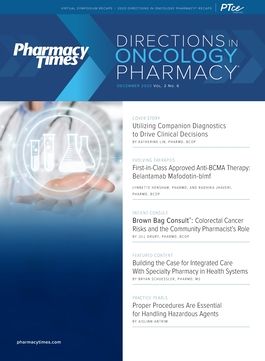Publication
Article
Pharmacy Practice in Focus: Oncology
Four FDA Approvals for HER2+ Breast Cancer in the Past 2 Years Have Led to Transformative Treatment Outcomes
HER2+ breast cancer accounts for 15% to 30% of the 276,480 women diagnosed with breast cancer annually in the United States.
PTCE would like to acknowledge Daiichi Sankyo, Inc. and Seattle Genetics, Inc. for their generous support of pharmacist education.
IN A LIVE 2020 Directions in Oncology Pharmacy® conference session, Allison Butts, PharmD, BCOP, engaged the audience in a concise overview titled HER2- Directed Therapy in Metastatic Breast Cancer. HER2+ breast cancer accounts for 15% to 30% of the 276,480 women diagnosed with breast cancer annually in the United States. Introduction of HER2-targeted therapies more than 20 years ago changed the prognosis of HER2+ breast cancer, with patients experiencing profoundly better outcomes when treated with HER2-targeted therapy.
Dr Butts kicked off the session by highlighting the importance of assessing HER2 status, noting HER2-directed therapies are incorporated into first-line therapy for neoadjuvant, adjuvant, and metastatic disease and should be continued upon progression in the metastatic setting. HER2 status can be assessed by several FDA-approved tests, including immunohistochemistry, in situ hybridization, or HER2 copy number.
Dr Butts provided a chronological review of FDA approvals in HER+ breast cancer from the historic ground- breaking first HER2-targeted therapy trastuzumab to the more recent approvals of trastuzumab deruxtecan, neratinib, tucatinib, and the subcutaneous (SC) pertuzumab, trastuzumab, hyaluronidase formulation. Lapatinib and neratinib have been shown to improve progression-free survival (PFS) in third-line therapy of metastatic HER+ breast cancer. Neratinib is similar to lapatinib, but it also inhibits the HER4 receptor in addition to HER1 and HER2; this translated to longer PFS compared with lapatinib when combined with capecitabine. Tucatinib is selective for the HER2 kinase domain to reduce diarrhea compared with lapatinib or neratinib. Tucatinib, in combination with trastuzumab and capecitabine, improved PFS in patients previously treated with trastuzumab, pertuzumab, and ado-trastuzumab emtan- sine and is approved by the FDA for second-line therapy and beyond of metastatic HER2+ breast cancer. Trastuzumab deruxtecan is an antibody drug-conjugate comprising a combination of trastuzumab and a topoisomerase I inhibitor recently approved by the FDA for third-line therapy of metastatic HER2+ breast cancer; adverse reactions may include neutropenia, anemia, nausea, and interstitial lung disease. Lastly, she touched on SC administration of pertuzumab and trastuzumab combined hyaluronidase with similar safety and a higher degree of patient preference over intravenous therapy. Dr Butts then provided an in-depth review of adverse effects associated with HER2-directed therapies, including cardiotoxicity, rash, diarrhea, and infusion reactions. Cardiotoxicity typically presents as an asymptomatic drop in ejection fraction in 0.03% to 25% of patients. Although cardiotoxicity was not observed with tucatinib, diarrhea and elevated liver enzymes may occur. Patients may develop an acneiform rash manageable with topical or oral antibiotics or corticosteroids. She recommended managing diarrhea by dietary modification, increasing fluids, dose interruption and/or reduction, along with antidiarrheal medications. Neratinib should be admin- istered with preventive antidiarrheal medication. Dr Butts highlighted infusion reactions are generally mild-moderate in severity and should be managed by holding the infusion and administering supportive medications. She emphasized patients should be rechallenged with appropriate preventive medications. Dr Butts concluded the session by emphasizing the role of pharmacists in improving the care and outcomes for patients receiving HER2-targeted therapies for breast cancer, including patient education, validating appropriateness of therapies for specific patients, and the prevention andmanagement of adverse effects that are associated with these therapies.






